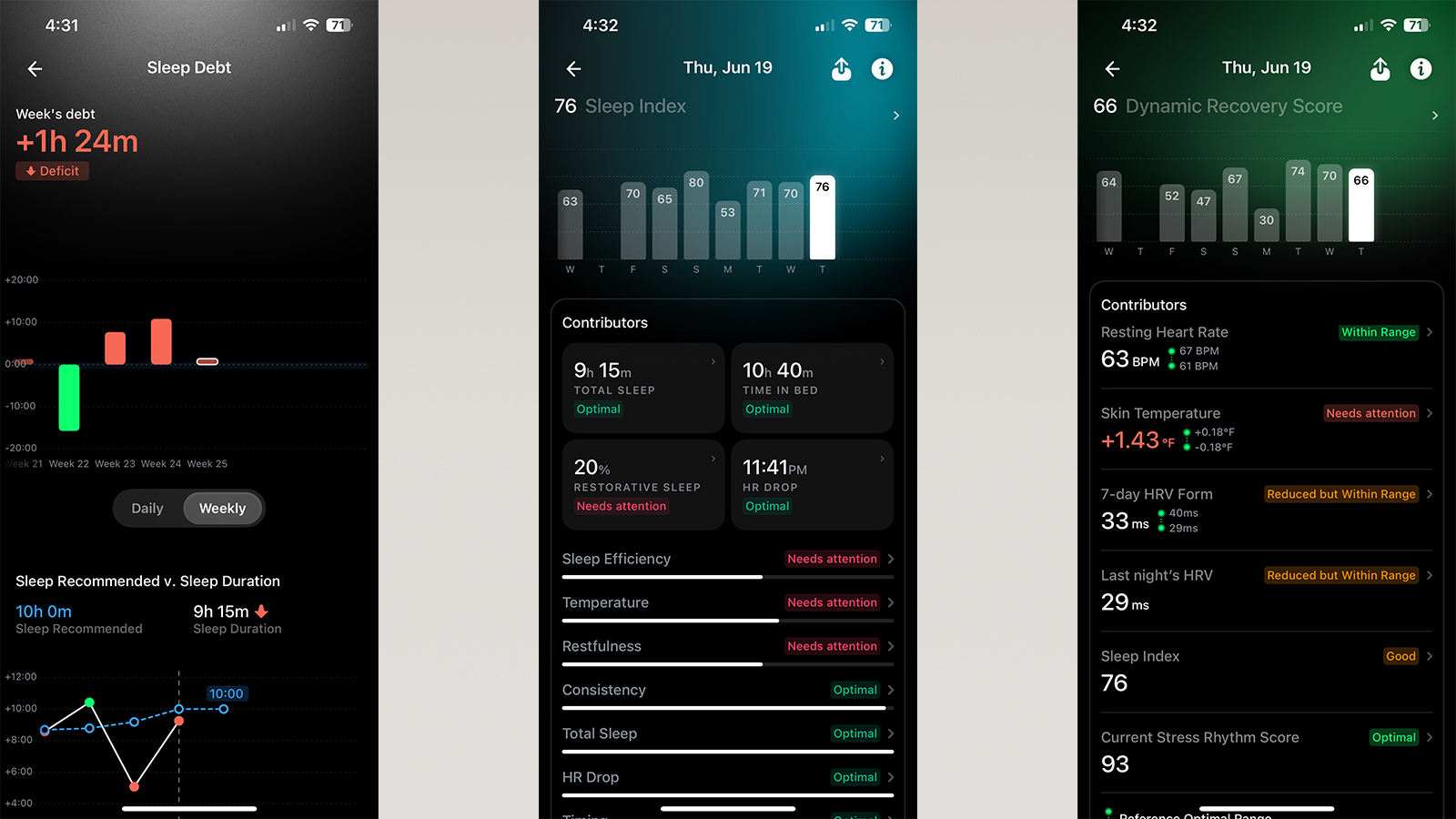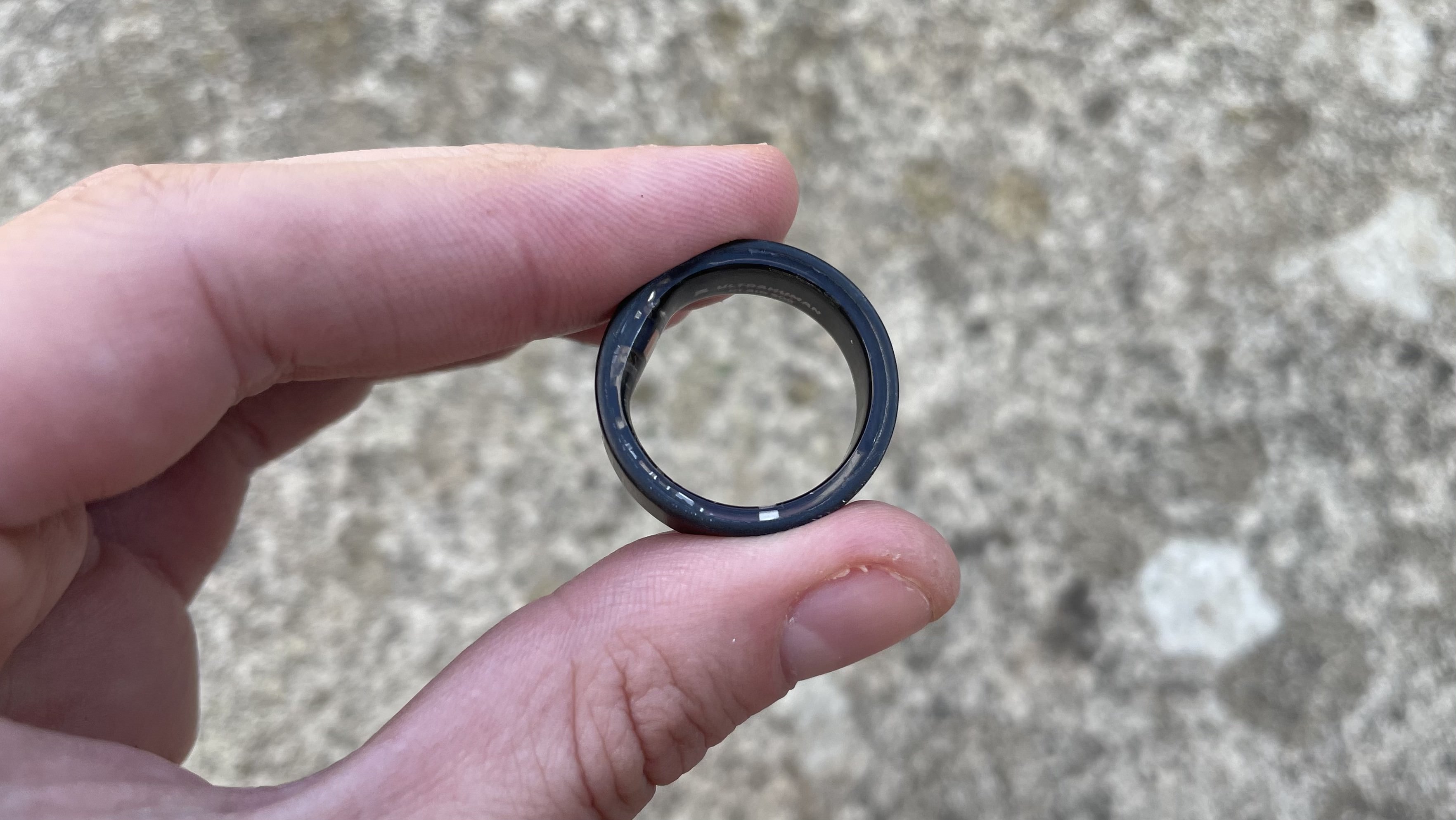I bought an Apple Watch a few years ago when life was easy… well, relatively. I needed my 10K walks logged, heart rate monitored and sleep tracked, so I picked up the Apple Watch SE 2 instead of going full fat. It was all I needed, but the sleep tracking was the most important for me as I haven’t been a ‚good‘ sleeper for yonks – I consider four hours of sleep a good night.
Then I hit that time in a woman’s life that can bring about rather uncomfortable experiences – perimenopause. It’s also an uncomfortable topic for some people but, for me, ‚uncomfortable experiences‘ is putting it mildly as my symptoms have been quite severe. From worsening sleep patterns to several hot flashes a day, even mood swings and brain fog – it’s a roller-coaster ride.
And the basic features of the Apple Watch SE weren’t quite helping me understand what was happening to my body, answers that I felt I desperately needed to manage my day-to-day symptoms.
I could either spend money on a better smartwatch or the Whoop band (and its subscription) or go down the smart ring route. I chose the latter and am happier for it.
While I considered trying the Oura Ring, which claims to have features for monitoring perimenopause symptoms, the subscription required to access the kind of in-depth data I was after put me off. So I tried the Ultrahuman Ring Air instead, which has no paywall and a heck of a lot of information available freely to wrap your head around.
Yup, there’s so much information that, a month into using it every day, I’m still trying to understand it all.
Now, don’t get me wrong – the Ultrahuman Ring Air isn’t providing me with solutions to counter my perimenopause symptoms, it’s giving me insights into why a metric (or two, or three) is not looking good, which I can then potentially match to something that may be menopause related, or make a note of and discuss with my doctor at my next visit.

Little things come in comfy packages
While information about my health metrics was the most important factor in my swap from an Apple Watch to a smart ring, it was also the form factor that mattered. As I’ve already said, my sleep patters aren’t great; in fact, I’m a very light sleeper and can wake up at the click of a light switch.
I’ve slept with the Apple Watch on the wrist a few times, but I could always ‚feel‘ it, which has affected my sleep previously. Not painful or poking, just… there. The smart ring, not so much. Yes, it’s thicker than the other pieces of jewellery I wear on my fingers, but it’s lightweight – no wonder the Ultrahuman Ring Air is our pick of the best smart ring for comfort.
Then there’s the Apple Watch’s limited battery life. Given it lasts barely 18 hours on a single charge, I used to set it to top up overnight and so hardly ever tracked my sleep with it. The Ultrahuman (or any other smart ring for that matter) can go on for a few days, so it’s consistently tracking everything. I pop it onto its cradle when I hop in the shower and it’s ready to go for a few days more.
I also like the idea that notifications are silently delivered to my phone, no haptic feedback on my finger that can get distracting sometimes. And I never thought I’d say this, but the lack of a screen means I’m not constantly looking at the rings or my heart rate, something that would usually add to my (already high) stress levels.

Cover me in sunshine
As lovely as Pink’s song is, you don’t want to spend too long in Australia’s sunshine (I live in Sydney) without the risk of something a little more sinister than a sunburn. Yet I appreciate that the Ultrahuman Ring Air tells me exactly how long I need to be outdoors to get enough Vitamin D for my body, and without causing any harm.
At setup, it asked me about my ethnicity to determine skin colour (and no, that’s not racist, it’s an important factor in this case) and, along with my age, gender and location, it not only tells me each day how long I ought to be outside but also what time is best. It’s a notification that pops up on my iPhone’s lock screen each morning without fail, alongside the best time to have caffeine (I’m not a coffee drinker, but it’s a nice touch).

It even takes into consideration the local UV index, ensuring it gives me daylight times when its between 3 and 6 to avoid the aforementioned sunburn. According to the Ultrahuman app, I should be getting 300 IU each day.
I have to admit I don’t (usually) follow those instructions and get barely a fraction of the sunlight I need as I might be stuck in the office. I mean, it’s really hard to spend four hours outside on a winter afternoon on a weekday as I’m typically stuck behind a desk. Still, this is a good thing to know, particularly for women after a certain age when bone health becomes critical.
Good night, sleep tight
Everything else about the Ultrahuman’s tracking is stock standard, but you can deep dive into every single metric to understand your body better.
For example, it gives me a sleep score each morning. Nothing new there, most smartwatches (and smart rings) do that. Tap on that and it break things down further into items like sleep efficiency, body temperature, restfulness, sleep consistency, HR drop and a lot more.
Each of those then can be delved into further for more information – and it’s this deeper understanding that I don’t get from the Apple Watch. And the Oura Ring would need me to pay to get this kind of data.
That’s a huge amount of information for a person to absorb and some might consider it overkill but, when you’re going through menopause like me, it might help you understand the sweaty sheets you’ve woken up on. I’ve occasionally seen spikes in skin temperature at night, many corresponding to night sweats.

My sleep score is hardly ever good and that I expected, but the Ultrahuman provides me with an optimal time to start winding down each evening depending on the past data it has recorded. Again, it’s not something I can do much about because it’s not always possible to crawl into bed at 8:45pm, but hey, it’s information I get each day and it helps a little.
Every morning it tells me I have Sleep Debt, encouraging me to sleep more – if only I could, but I am trying. Sleep Debt, to me, is a helpful metric as it tells me at a glance how much more sleep I need the next night to make up for the previous. I can’t always make it up, but I try.
I’ve now taken to napping on weekend afternoons if I can – something I’d never done before as an adult – to help eliminate the deficit and it does seem to help a little. The ring is appreciative of that and automatically detects these naps to deduct from my Sleep Debt.
Also related is the concept of Social Jetlag: depending on my sleep timings and debt, the Ultrahuman tells me I live in Nadi, Fiji, which has a five-hour time difference from Sydney. Yeah, bad sleeper, but this is good information that I can take to my doctor to discuss further action.

Trying to keep it cool
The one thing I was hoping to get from a smart ring is a notification in real time that my skin temperature is spiking – if I could get an idea that a hot flash was coming on, I could perhaps go splash some cold water on my face before it went all purple and sweaty (and ‚purple‘ is no exaggeration, it’s my reality) or perhaps grab an ice pack from the freezer.
Sadly the real-time notification of a temperature spike doesn’t happen, I find out after the fact in the app. Then again, my Apple Watch SE has no skin temperature sensor like the newer models (Apple Watch 8 and newer) have, so I’m actually getting more with the ring, albeit later than I want the information.
That said, it seems like the temperature monitoring is associated with sleep, so I’m not entirely sure if the Ultrahuman will help me keep track of hot flashes – I’m still trying to figure that one out.
I am, however, pleasantly surprised at how accurate the temperature readings are via the Ultrahuman Ring Air. When I recently came down with Covid and spiked a fever, the ring matched my thermometer’s reading of 100ºF/38ºC on day one of the infection and half a degree less the next day, both readings showing up within the sleep score section.
The ring isn’t particularly happy with my stress levels either, and that’s another thing I’m still trying to improve – breathing isn’t always the answer, but it helps a little.

Put a ring on it
I don’t want to waffle on about how much more there is to delve into with the Ultrahuman, mostly because I’m still learning what all that data means myself. While I need more time with it, I’m appreciative of the insights I’m already getting.
I’m hoping the company will begin adding more features for women’s health monitoring over time, just like Oura has done. These could easily be done via firmware updates as all the hardware is already available on the device itself.
What it comes down to is this: I’m not planning on going back to wearing a smartwatch of any kind. I like smart rings far more now. The form factor, the in-depth data and little explanations for each metric is great.
If, some time down the line, Ultrahuman doesn’t add more women’s health features to its tracking metrics, I would consider swapping to the Evie Ring instead. This wearable was specifically designed with women’s health in mind… if only I can find a local stockist in Australia.


